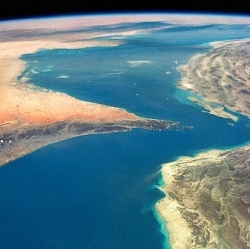
Swarms of cheap “CubeSats” are currently being planned to bring internet access. But there’s nothing to stop these sprawling “megaconstellations”, which would include thousands of spacecraft, from colliding with other satellites and unleashing hazardous space debris in low Earth orbit.
Hugh Lewis at the University of Southampton in the UK has sounded the alarm about the risk of small satellite collision cascades before. That was in 2014, when 100 or so CubeSats were being launched per year.
Since then, a number of space-flight firms have announced plans to beam internet services around the globe from vast numbers of satellites, which would be known as megaconstellations. There are only 1300 working satellites in orbit now. But OneWeb, which hopes to launch in 2018, will need 648 satellites, Boeing plans a 2900-satellite fleet, and Samsung and SpaceX both plan 4000-strong swarms.
Now, Lewis and his colleagues have used a supercomputer to simulate 200 years of possible orbits for 300 different megaconstellation scenarios. Their results, revealed this week at a European Space Agency conference on space debris in Darmstadt, Germany, suggest a raft of new rules need hammering out to reduce debris risks.
The supercomputer revealed that megaconstellations boost the risks of a catastrophic collision – in which a satellite is completely destroyed – by 50 per cent.
Numbers are just one problem: the satellites required are usually small, mass-produced CubeSats that lack any motors or other ability to avoid collisions. One big fear is that debris fragments will collide with other spacecraft, causing a chain reaction known as Kessler syndrome, named after former NASA scientist Donald Kessler, who worked out the theory in 1978.
“Megaconstellations represent a unique problem, especially when comprised of CubeSats,” Kessler says. “Any benefit from the small CubeSat size is more than offset by their numbers. But also because of their small size they are more vulnerable to small debris – debris that is smaller than can be tracked by any network.”
Lewis and his colleagues call for space agencies, which regulate launches and debris mitigation measures, to bring dead satellites down sooner. Current rules order that satellites must de-orbit and burn up within 25 years after their mission ends, but that’s too long for megaconstellations, Lewis says.
The team also suggest mandating onboard propulsion systems for small satellites so they can avoid collisions and steer themselves into Earth’s atmosphere to de-orbit at the end of their lives. Making satellites smaller and lighter – to reduce collision energies – would help, too. The ESA conference will discuss these proposed measures, and others, this week.
Legally, the potential impact of megaconstellations on the orbital environment means their operators now need mandatory, rather than today’s non-binding and voluntary debris mitigation guidelines, says Christopher Newman, a space law specialist at Sunderland Law School in the UK.
“International treaties and national legislation need to impose duties on those engaged in space operations to embed more sustainable practices,” he says. “Legislators need to act to counter this growing threat to the space environment.”
